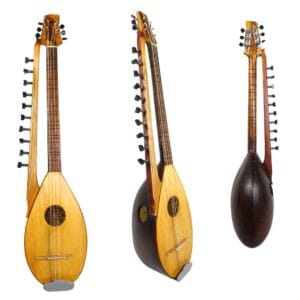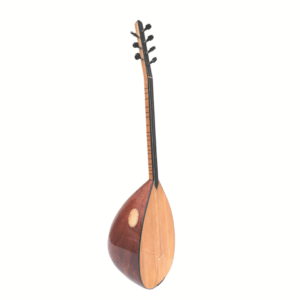- × 1 × € 829,12
When we think of Turkish folk music, one of the first instruments that comes to mind is undoubtedly the bağlama. With a unique story in every region of Anatolia, this traditional instrument is more than just a tool for music—it is a cultural memory.
In this article, we’ll explore what the bağlama is, the different types of bağlama, and which types are most suitable for whom. We’ll also offer practical advice for those looking to buy a bağlama or start learning how to play.
The bağlama is a plucked string instrument and the most well-known member of the long-necked tambur family. It is played with a plectrum (tezene) or by fingerpicking. Traditionally handmade from wood, the bağlama comes in various sizes, sound colors, and technical specifications.
Typically has 7 strings (in 3 courses: 2-2-3)
Features different tuning systems such as bağlama tuning, bozuk tuning, and kara düzen
A favorite companion of Turkish folk poets and musicians
This is the most traditional type of bağlama. It offers a wider range of frets and is often preferred by advanced players.
Advantage: Wide tonal range and rich expression
Best for: Advanced players, stage performers, and those who favor classical-style folk songs
Easier to learn and more compatible with modern music styles. Ideal for beginners.
Advantage: Easy grip and simpler chord transitions
Best for: Beginners and those who want to play chord-based folk songs
With a larger body and longer neck, it offers a powerful sound output. Commonly used in the minstrel (ozan) tradition.
Advantage: Deep resonance and strong projection
Best for: Loud stage performances and traditional-style playing
These are smaller-sized members of the bağlama family.
Tambura: Medium-sized, often used for solos or accompaniment.
Cura: The smallest bağlama type, producing high-pitched sounds.
Note: These types are frequently used in ensembles for rhythm, melody, or ornamentation.
Choosing a bağlama can be tricky, especially for beginners. Here are some quick tips:
For Beginners: The short-neck bağlama is the easiest to learn.
For Advanced Players: Long-neck bağlama or divan saz offers broader musical possibilities.
For Children or Small Hands: Cura may be the ideal option.
For Traveling Musicians: Tambura offers portability.
Wood Quality: The body is often made from mulberry, mahogany, or chestnut wood.
Craftsmanship: The level of detail in handmade bağlamas directly affects sound quality.
Neck Alignment: A properly aligned neck and accurate fret placement are crucial.
Tuning Pegs: Choose between traditional wooden pegs or more practical mechanical ones.
The bağlama is not just an instrument—it is deeply intertwined with Alevi-Bektashi culture, the folk poet (ozan) tradition, and Anatolian daily life. Folk songs, laments, hymns, and lullabies have all been passed down through the bağlama.
Among traditional instruments, it remains one of the most popular because it conveys both emotion and story like no other.
At Tapadum Music, we offer beginner to advanced bağlama lessons both in our physical store and online through the Tapadum Academy platform.
With our expert instructors, we’re here to support you on your journey with the bağlama.
Online lessons
In-person workshops
Repertoire training with master musicians
The bağlama is the cornerstone of Turkish music and a cultural icon. No matter which type you choose, your connection with this instrument will bring you closer to music and the ancient voice of Anatolia.
Starting a new hobby is one of the most natural ways to express yourself. The bağlama might just become your most sincere companion on that journey.










Mail: info@tapadum.com
Working Days/Hours: Mon – Sun / 10:00 AM – 5:00 PM
Le visite in negozio richiedono un appuntamento